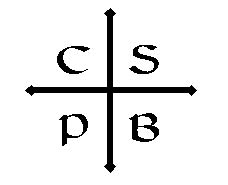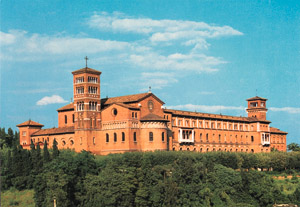Benedictin Community of Farfa
Order of Saint Benedict

The Monastic Community of Farfa is composed of 7 monks. It belongs to the Cassinese Congregation of the Order of Saint Benedict.The Congregation owes its origin to a reform initiated by Abbot Ludovico Barbo in the Monastery of Santa Giustina in Padua in 1408. In 1504, the Monastery of Montecassino adhered to the reformation and the Congregation took its current denomination.
Cassinese Congregation
The monastic Congregation of Benedictine monks owes its origin to the intense effort of restoration initiated by Ludovico Barbo, appointed Abbot of the Monastery of Santa Giustina by Pope Gregory XII on the 20th December 1408 in Padua. The Monastery soon became the birthplace of the Benedectine reform in Italy.
The Monastery at that time was almost uninhabited and desolated so Ludovico gave birth to a union of monastic congregations in order to restore the regular cloistered life therefore improving the spiritual discipline and the economy. He also re-established a real observance of the Rule of Saint Benedict, which was decayed after the Great Schism and due to the introduction of the commendam. The Benedectine monasteries were particularly affected by the commendam because of their properties and income.

In that period many vocations occurred so that in 1437 the Congregation included 18 monasteries, about 300 monks, in addition to the monasteries of old origins which during the reform had their chance for rebirth. The Congregation, originally called De unitate, was approved by Pope Martin on the 1st of January 1419 with the Bull of Ineffabilis summi providentia Patris. In the General Chapter in 1434, as in 1433, the Congregatio monachorum de observantia S. Justinae, vel Congregatio Unitatis dominated. Pope Eugene IV confirmed the two denominations, while in 1504, on the occasion of the annexation of Montecassino, it assumed the denomination of Cassinese Congregation, still in use. Among the numerous monasteries, the Monastery of Farfa joined the Congregation in 1567.
In 1604 the Cassinese Congregation was in debt and many monasteries, due to the bad business management and because of the great demand of money for the war against the Turks, went broke. Laymen used to be responsible for the monasteries' deals in order to leave the monks free to dedicate their days praying and studying.
During the eighteenth century a great number of monasteries were suppressed by the governments at the time to get the income, but the heaviest damages were caused by the French Revolution. The Napoleon suppression and the Italian domination caused the shut-down of a great number of monasteries. Pope Pius IX hardly tried to re-establish some monasteries and many of them were brought back to the Observance of the Benedict Rule.
In 1851, due to the warrant of the Apostolic See, Pietro Casaretto di Subiaco, Abbot and President of the Cassinese Congregation, animated by a sense of reformation and return to the origins, raised a Province named Sublacense, which gave birth to the Congregation, later on approved by the Holy See in 1867. Some of the Congregation's monasteries are still well known today: the Territorial Abbeys of Montecassino and Cava and the Abbey of St. Mary of Farfa in the Sabine region. After the II Vatican Council, with the approval of the religious reformation, the Congregation has elaborated a new Constitution which has also received a remarkable contribution from the General Chapters celebrated at Farfa.
Benedictin websites
Saint Benedict Order
Benedictin Confefederation
Abbey of Sant'Anselmo